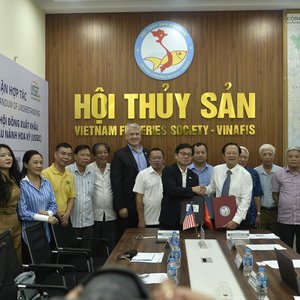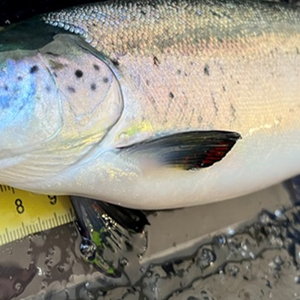A year after the authorization of non-ruminant processed animal protein (PAP) in fish feed in the EU, public statements are being made in the media that condemn the partial lifting of the feed ban as “unnatural” and “dangerous” but without any foundation in science. The EU aquaculture sector is proactively steering its activities towards more sustainable farming systems by constantly researching alternative feed resources for the benefit of the environment and without compromising public safety or animal health. Media campaigns against the use of PAP create unfounded consumer concerns about the safety and sustainability of aquaculture products. FEFAC, EFPRA and FEAP have jointly listed several published and recurring myths that urgently need clarification for the sake of a science-based debate.
“The currently authorized PAP for fish feed were the cause of the BSE crisis” – There is a lot of confusion between the inadequately treated meat and bone meal (MBM) of ruminant animal origin, which was at the base of the BSE crisis, and the non-ruminant PAP that is now authorized in fish feed. Today, MBM in the EU is made from category 1 and 2 animal by-products1, which are not fit for human consumption (e.g. deceased animals). MBM cannot be used as a feed material anymore in the EU for food producing animals and must be either destroyed (category 1) or be channeled to technical or energy uses (category 2). PAP is derived from category 3 material considered fit for human consumption according to the strictest safety rules but, because of consumer dietary preferences, is not sold on the food market (e.g. edible bones, feathers, skins or tendons). The EU decided to take a first step by lifting the feed ban for non-ruminant PAP use in fish feed in 2013, once new analytical methods had been developed and validated by the EU Reference laboratory for animal proteins. When the feed ban was introduced for PAP in 2001, the main reason was the absence of analytical control methods , which could ensure that only “food grade” material would be used in animal feed and that intra-species recycling would not take place, as requested by the European Parliament. Consequently PAP and MBM are fundamentally different products, yet the terms are often incorrectly used interchangeably in non-scientific publications and media outlets. One reason for this is that MBM (category 2) is still authorised for animal feed use outside the EU and the term MBM is still widely used. It is clear therefore that PAP was not the cause of the BSE crisis.
“PAP is a cheap waste product unsuitable for animal nutrition” – Animals need nutrients, as opposed to ingredients. Essential nutrients such as protein, minerals and fats form the basic components of a balanced diet and the key criterion is the quality of such nutrients. Whether the source is soy, rape or from land or marine animal origin does not matter. This is why it is no more “unnatural” to feed omnivorous species such as pigs, poultry or fish with exclusively vegetable-based diets than diets containing animal proteins. As an example, fish require a balanced diet that is rich in highly digestible protein and energy, a requirement the protein-rich PAP meets. In addition, PAP is also able to contribute to the nutritional needs for calcium, phosphorous and vitamin B12. PAP is therefore a high-value resource which is as safe as any other protein and cannot be regarded as a waste product by any means, especially considering the fact the EU feed industry is subject to comprehensive food and feed safety legislation that explicitly excludes any waste product as a feed material. In 2011, EFSA publically announced that the use of PAP in fish feed is beneficial for fish and is completely harmless to the EU consumer. In the EU however, it is currently mainly used in other outlets such as pet food and fertiliser. PAP should be classified as one of the many other co-products from the food industry that contribute huge volumes of nutrients to animal nutrition today (more than 90 Mio tons). PAP’s are listed as feed materials in the EU feed material catalogue2, officially recognised by the European Commission. PAP is thus neither a waste product nor unsuitable for animal nutrition.
“The EU doesn\'t need PAP in fish nutrition” – To meet the nutritional requirements of farmed fish in aquaculture, the EU has to import large quantities fish meal and fish oil. Currently approximately 75% of global fish oil production and more than 70% of the fish meal production is used in aquaculture. World demand for aquaculture products is increasing meaning that the need for protein-rich ingredients will subsequently also rise. At the same time the sustainably-produced resources of fish meal have reached their limits. PAP provides a safe protein-rich alternative to fish meal, is available in considerable quantities in the EU and could therefore reduce the dependency on third country supplies as well as reducing the fishing pressure on global fish stocks. As a comparison, outside the EU the use of animal proteins in fish feed in order to replace fish meal has been common practice for many years already without any safety, health or environmental related concerns. EU retailers have been importing large volumes of aquaculture products from third countries of which a significant volume has received aquafeed diets containing animal proteins. All EU aquafeed chain partners consider non-ruminant PAP a highly valuable protein resource which can make a significant contribution to the sustainable development of EU Aquaculture as recommended in the new chapter on Aquaculture of the EU’s Common Fishery Policy. The benefits for using PAP in fish nutrition are evident.
FEAP, the Federation of European Aquaculture Producers, is the united voice of the European aquaculture production industry, being the Federation of National aquaculture associations in Europe that represent professional fish farming. With 26 members drawn from 22 States across Europe, the FEAP represents over 2 million tons of produce, an ex-farm value of more than €8 billion and 100,000 direct jobs in coastal and rural areas.
FEFAC is the European Feed Manufacturers\' Federation. The European compound feed industry employs over 110,000 persons on around 4,500 production sites often in rural areas, which offer few employment opportunities. Farm animals in the EU-28 consume an estimated 470 million tons of feed a year, of which 150 million tons are produced by the compound feed manufacturers. Turnover of the European compound feed industry is estimated at €55 billion in 2013.
EFPRA is Europe’s leading authority on the use, value and bio-security of edible animal fats and meat industry by-products. EFPRA represents the processing of over 15 million tons raw material into 2,5 million tons animal fat and 4,3 million tons animal proteins. EFPRA has 35 members in 26 European countries which employ over 15.000 people.
1 Regulation (EC) No 1069/2009
2 Regulation (EC) No 68/2013
Note: Dr. Gert van Duijn, Project manager, TNO Triskelion BV, Netherlands will describe the research organization’s method of highly specific detection of ruminant DNA in aquafeed that was created in response to the authorization of non-ruminant processed animal protein (PAP) in fish feed in the EU at the FIAAP Conference Asia, to be held April 9, 2014, Bangkok, Thailand. Registration is required by April 1. For details of this conference please visit: www.feedconferences.com










